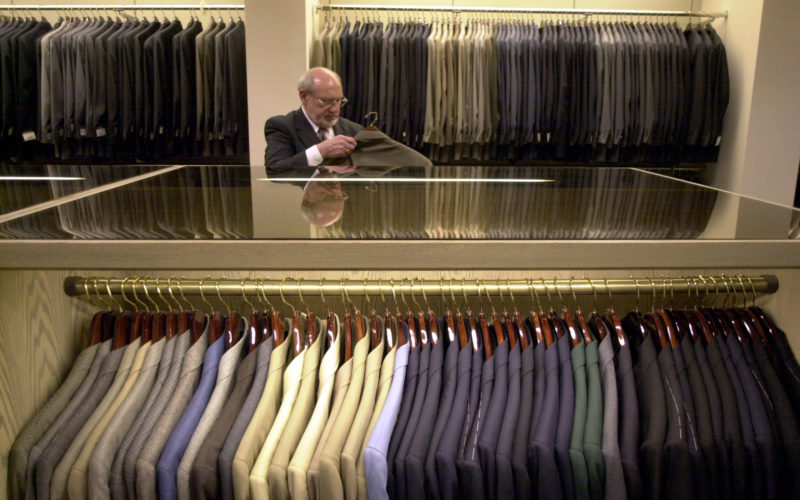Q. When I shop for clothes, I find that different manufacturers size their clothes differently. Sometimes the shirt that fits me is marked a “medium,” and then another shirt that fits from a different maker is a “large.” And two different pairs of pants that fit my actual waist size are marked different sizes. Is this about American vs. foreign sizes?
A. That can sometimes be an issue, but generally this issue arises across manufacturers and countries. I often hear men say that they hate to shop for clothes. I’m sure they have several reasons for feeling this way, and size confusion is likely to be one of them.
We all have some concerns about the clothes we buy; whether or not they fit should not add to our discomfort. So, why is there more than one correct size when your body has not changed? The answer has a lot to do with the image the clothing manufacturer wants his clothes to project.
You are right, people do tend to wear different sizes in different brands. One brand’s medium could be another brand’s large, and one store’s medium could match a large from another store.
You should know that sizing is not monitored, and it’s not regulated. There are no actual rules. Neither are the words they use to describe the product. Most things in the clothing industry are only loosely regulated. As an example, even “Made in the USA” generally just means that the final product was assembled in the United States — the cloth that goes into it could come from anywhere.
One legitimate reason for differences is that some manufacturers pre-wash garments before sending them out. Another factor is that everyone has different preferences when it comes to fit, often based on body type. Some like a tighter fit, while others prefer a looser one; others may prefer longer or shorter sleeves. These contribute to the confusion surrounding clothing size, as the brands then choose the term they use based on these factors.
Most people, both men and women, like to think their waistline is a smaller size than it is. Some brands inflate sizes so customers can fit into smaller sizes and feel skinnier. This is known as “vanity sizing.” It happens more with women’s clothing, but it exists with all clothes, and is a significant source of size confusion. It can make people wonder if they wear a size other than their usual one.
Then, too, the small, medium, large, and extra-large sizes for shirts are not the only way you might find shirts marked in stores. While casual shirts and sport shirts are usually sized that way, most dress shirts come in what the clothing industry calls “exact neck and sleeve sizes,” such as 15½/34 or 16/35. The same goes for pants; both dress trousers and casual pants often come with waist sizes and inseam lengths, to further add to your confusion.
The truth is, as you appear to have discovered: there is only one way to guarantee that something you buy is going to fit you correctly . . . you must actually try it on. I am aware that for some men, this is considered to be torture. They hate the process. But it is a surefire solution.
There is one piece of good news: once you find a garment that fits you the way you want it to, you don’t need to go through the entire trying-on process each time you shop. Just remember the name of the designer or the manufacturer and which store you bought it in, and return there as a loyal customer. The sizing should be consistent. Also you will begin to be recognized by the salespeople there. You will be treated well as a “regular” customer, and you may find that shopping for clothes that flatter you can be a rewarding and even a pleasant experience.
Please send your men’s dress and grooming questions and comments to MALE CALL: Lois.Fenton@prodigy.net









